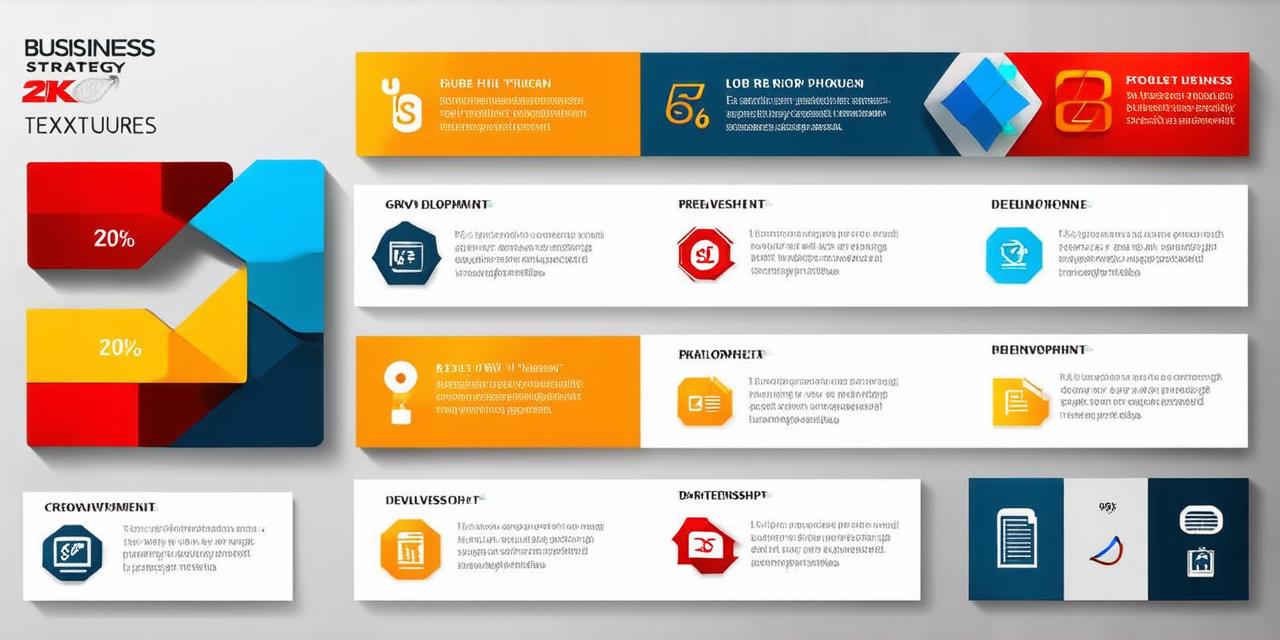For any business to thrive and grow, it’s essential to have a solid business development strategy in place. This plan outlines how you will acquire new customers, increase sales, and expand your company’s reach. In this article, we will explore the key steps to developing an effective business development strategy and provide real-life examples to illustrate these points.
Step 1: Define Your Target Market
Before you can develop a successful business development plan, you need to know who your target market is. This includes understanding their demographics, interests, and pain points. By identifying your ideal customer, you can create marketing campaigns that speak directly to them and solve their problems. For example, if you own a software company, your target market may be small business owners who are looking for an affordable solution to manage their inventory.
Step 2: Develop Your Value Proposition
Your value proposition is what sets your business apart from the competition. It’s the unique benefit or feature that you offer to your customers. By identifying your value proposition, you can differentiate yourself from other businesses in your industry and attract new customers. For example, if you own a cleaning service, your value proposition may be that you use eco-friendly products and methods that are safe for both your customers and the environment.
Step 3: Create a Sales Funnel
A sales funnel is a series of steps that guide potential customers through the process of becoming paying customers. It includes everything from initial awareness to making a purchase decision. By creating a sales funnel, you can convert more leads into customers and increase your revenue. For example, if you own an online store selling clothing, your sales funnel may include offering free shipping on orders over a certain amount, providing personalized product recommendations based on customer preferences, and offering discounts to first-time customers.
Step 4: Build Your Network
Building a strong network is critical for any business looking to grow. This includes connecting with other business owners, industry leaders, and potential customers. By attending networking events, joining online groups, and reaching out to people in your target market, you can build relationships and increase your visibility. For example, if you own a marketing agency, building your network may include attending conferences and workshops related to digital marketing, connecting with other agencies on LinkedIn, and offering free consultations to potential clients.
Step 5: Measure and Adjust Your Strategy
Finally, it’s essential to measure the effectiveness of your business development strategy regularly. This includes tracking your website traffic, social media engagement, and conversion rates. By analyzing this data, you can identify areas for improvement and adjust your strategy accordingly. For example, if you notice that your social media posts are not generating as much engagement as expected, you may need to experiment with different types of content or target a different audience.
Case Study: HubSpot
HubSpot is an all-in-one marketing, sales, and service platform that helps businesses grow. The company’s founders, Brian Halligan and Dharmesh Shah, developed their value proposition by identifying the pain points of small business owners who were struggling to generate leads and close deals. They created a comprehensive inbound marketing strategy that included creating valuable content, optimizing their website for search engines, and using social media to connect with potential customers.
As a result, HubSpot has grown rapidly, with over 7,000 employees worldwide and $1.5 billion in revenue in 2020. The company’s success can be attributed to its ability to execute on each of the key steps outlined above, from defining its target market to measuring and adjusting its strategy.
Personal Experience: John Doe

As a small business owner myself, I have experienced firsthand the importance of having a solid business development strategy in place. When I started my own marketing agency, I struggled to attract clients and generate revenue.
